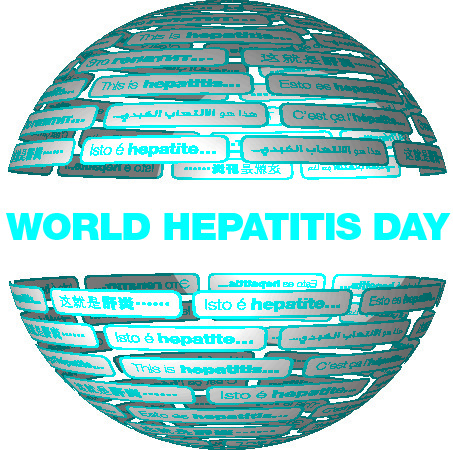Last week on Stay Well WDG, we shared with you Public Health’s role in the battle against hepatitis, in honour of World Hepatitis Day which is today (July 28)!  Our role is to not only prevent and protect against hepatitis by offering immunizations where available (there is no vaccine for hepatitis C), but to counsel, connect and arrange care for those diagnosed with hepatitis. Often, after a client receives a positive hepatitis C diagnosis, we refer them to the Sanguen Health Centre Foundation in Guelph for treatment.
Our role is to not only prevent and protect against hepatitis by offering immunizations where available (there is no vaccine for hepatitis C), but to counsel, connect and arrange care for those diagnosed with hepatitis. Often, after a client receives a positive hepatitis C diagnosis, we refer them to the Sanguen Health Centre Foundation in Guelph for treatment.
Our blog this week is contributed by Tracy Hobson, a former Public Health Nurse at WDG, Tracy has been a hepatitis C Treatment Nurse with the Sanguen Health Centre Foundation now for four years and has witnessed the changes in treatment options available to hepatitis C patients over the last 10 years. She describes the changes as remarkable:
Ten years ago, people diagnosed with hepatitis C would be faced with 24-48 weeks of treatment that was, at best, difficult for most patients to complete and, at worst, impossible to complete for others. The treatment combined two drugs interferon and ribavirin, which were accompanied by a laundry list of side effects so significant that counselling of patients’ loved ones was often necessary.
 Patients with mental illness were not offered treatment due to the possibility that treatment could actually worsen their mental illness. Generally, patients who did receive treatment suffered through physical and emotional side effects despite knowing that the successful cure rate was just 40-60%.
Patients with mental illness were not offered treatment due to the possibility that treatment could actually worsen their mental illness. Generally, patients who did receive treatment suffered through physical and emotional side effects despite knowing that the successful cure rate was just 40-60%.
Now, fast forward to present day, and advancements in treatment for hep C patients allow for a much more positive outlook in their battle against the disease, with new hepatitis treatments curing 90-95% of patients.
There is still no vaccine for hepatitis C and people can contract hep C more than once. According to Health Canada, it’s estimated that 170 million individuals are infected worldwide, including about 250,000 Canadians. Hepatitis C is spread through contact with infected blood.
Many people do not even realize they are infected with hepatitis C. To learn who is most at risk of contracting the virus, click here.
To avoid becoming infected with hepatitis C:
- Use safe sex practices
- Avoid sharing personal hygiene items like razors, toothbrushes or nail clippers
- Don’t share needles
- If getting a tattoo, piercing, manicure or pedicure, ensure the facility uses single-use needles and inks and follows proper sterilization procedures. Public Health inspects personal service settings, so be sure to Check Before You Choose.

In Canada, between 70-80% of people become infected by using or sharing:
- Needles that may be contaminated with blood
- Other drug-using equipment including straws, pipes, spoons or cookers
Though some treatment methods still use the drugs ribavirin and interferon, they are combined with new direct acting antiviral medications. This means the success rates are significantly higher, ranging from 78-90%.
For the most common strain of hepatitis C in North America (70% of all infections), new medications are proving to be a significant breakthrough. Most patients can be treated with 8–12 weeks of treatment with a single pill taken once daily, with treatment offering success rates of 90% or more. Patients who have been previously treated and or have more advanced infections may require an extended 24-week treatment period, but still experience 85-90% success rates. There are still side effects associated with the newer treatments, and some patients do still find the regimen difficult to complete. It is important to note that many patients suffering from hep C have other disorders present that can make any form of treatment a challenge.
Despite all of the improvements that I have witnessed during my 10 years working with the hepatitis C field, four of those years as a hepatitis C Treatment Nurse, there are still areas we need to improve including access to medications used to treat infection, factors qualifying individuals for treatment and drug coverage.
It’s exciting to have witnessed some of the significant breakthroughs in terms of treatments that have occurred. But, the battle against hepatitis C is a challenging one because most people who are infected with the virus either have not been diagnosed yet, may be immersed in drug culture, other vulnerable social groups or have other more pressing health concerns. This highlights the importance of testing and engaging with those individuals at risk of having or becoming infected with hepatitis C. There is still much work to be done!
I encourage everyone to take action and get tested for hepatitis C in support of World Hepatitis Day. Call 1-800-265-7293 to book an appointment for hepatitis B and C testing at a Public Health clinic.
